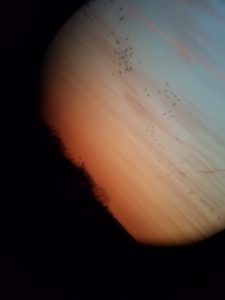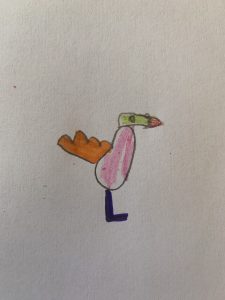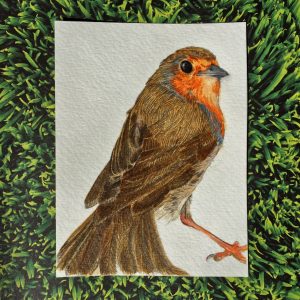Every Spring in a small Nebraska town, the neon no-vacancy lights of motels and hotels glow. The B&Bs burst at their brims. The state park is chock-full of RV campers. The patrons who regularly belly-up at Dad’s Tavern pay no mind to this influx of tourists. They simply sigh in agreeance with one another. The craniacs have arrived.
Craniacs, a special subset of bird-people, will go to great lengths in search of Cranes. You can identify them based on their Crane embroidered sweatshirts and socks, the Crane wind chime on their porches, and in their natural habitat - the bird blinds of the Midwest.
Sandhill Cranes en route to their arctic breeding grounds seek overnight refuge on sandbars of the Platte River. Through binoculars and scopes, craniacs observe the Cranes as they land and take flight at dusk and dawn. Kearney, a stone's throw north of the Platte, provides the perfect convergence site for these humans.
My father, a craniac, raised me in his likeness. When I was young, my family frequently set out to watch the Sandhill Cranes feast on remnant crops in eastern Colorado fields. My father told the children to search among the dusty grey pods of Sandhill Cranes for the stark white contrast of a Whooping Crane. We never found one but this distracting task gave these outings purpose for our young, impatient minds.
As Spring arrives, decades after these family events, I find myself using my free time in search of Cranes. Last week was my second migration to Kearney to look for that anomalous white bird hidden in the mass migration of Sandhill Cranes.
The first year I went to Kearney, the temperatures were brutally cold. Not having anticipated the crowds this spectacle would draw, there was no chance to get a hotel room at the last minute. In town, at the state park, and at bird sanctuaries, the human-to-Crane ratio seemed close to one-to-one.
Anticipating frigid temperatures and gigantic crowds of humans, this year the car was packed accordingly in preparation to endure the cold nights at the campground. Upon arrival, the campsite was empty. On the second night, with 6 inches of snow forecast it was time to see if there was a hotel to weather the storm.
Vacancy. Everywhere. Each year, thousands of disparate groups of people come together in Kearney for this migration. This year, craniacs opted to stay home.
Unbeknownst to those of us who had turned off our phones and made the journey in a 1980’s truck with a broken radio, at some point in the seven-hour blue-highway drive from Lawrence to Kearney, the social response to COVID-19 in the United States had drastically changed.
But the birds were birds. They did what they have done for thousands of generations. They flew. They danced. They sang their unharmonious hymns.
Although it felt surreal to be coming into this news while camping, the constant echo of bird songs and the strata of never-ending plumage shifted something in my brain. That shift, I believe, has helped me stay calm through this moment of uncertainty. Since coming home, I find myself noticing the birds more. Waking to their calls with a new ability to drown out those early morning panic thoughts. Roaming the neighborhood and the woods paying special attention to the movement in the trees. And wouldn’t you know that in the last two days a female American Robin has been working on building two nests on my porch, right below the Sandhill Crane wind chime.
As Graeme Gibson says in the Bedside Books of Birds, “A great many birdwatchers, from those who simply maintain feeders in their gardens to those, more obsessed, who wander the world in search of new and better birds, have stumbled onto a seductive truth: paying attention to birds, being mindful of them, is being mindful of Life itself.”
If you are looking for a new hobby during this quandary, a hobby that doesn’t cost any money, doesn’t require you to interact with other humans, and will go on with or without school and business closures, look outside. Take the lead of the artists whose work is included in this blog and capture the world you see and hear. After all, the crochids are in bloom. The worms have made their way to the surface of the soil. And the birds will continue to build their nests and lay their eggs.
________
Digital resources that may help inspire you to create on your next outdoor adventure:
Birds in Watercolor, Collage, and Ink
Art of Botanical & Bird Illustration
-Kaitlin Stanley is a Readers' Services Assistant at Lawrence Public Library.





Add a comment to: Birds Will Be Birds